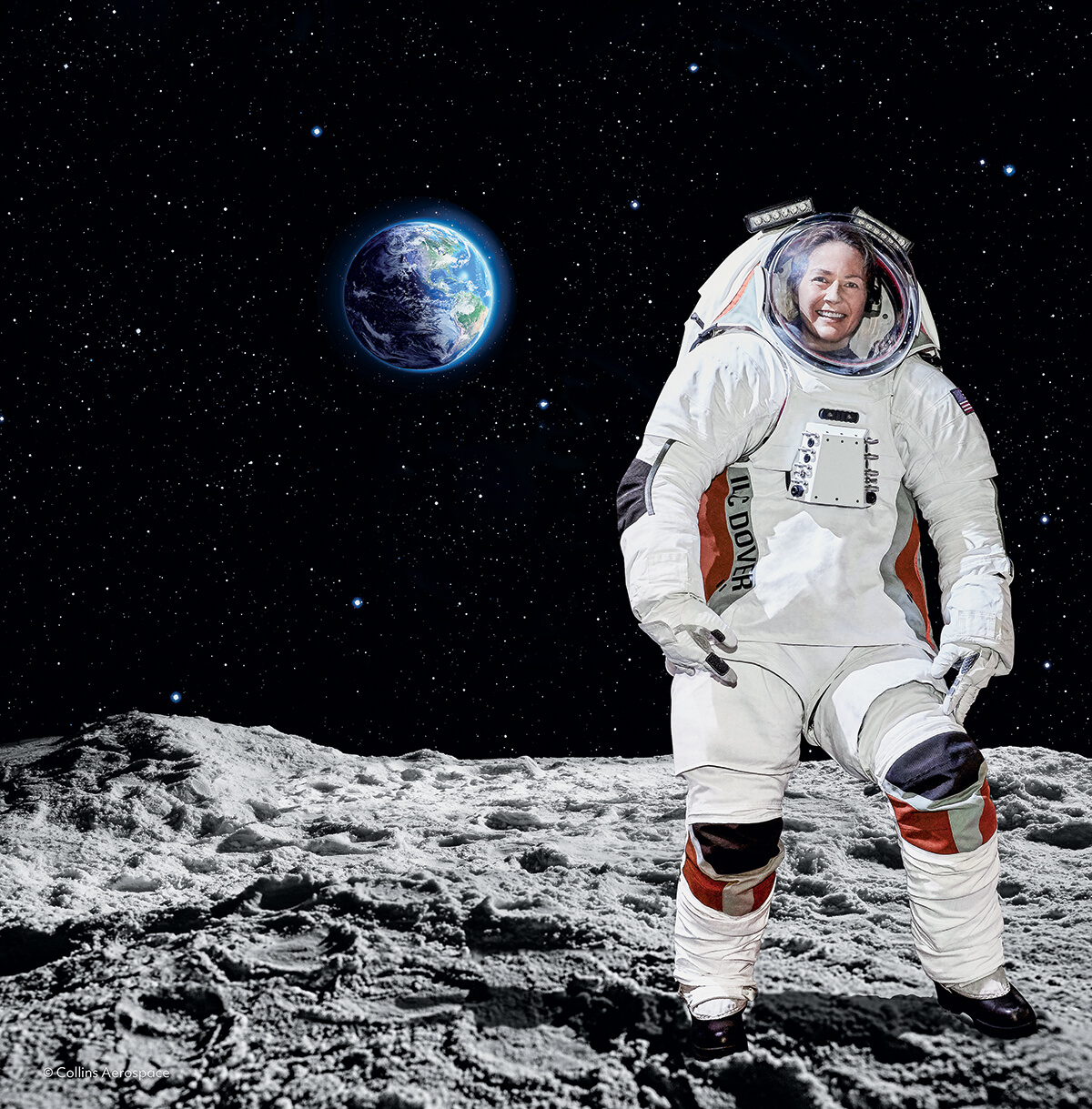connect
Fit to Fly
An alumna is on the team suiting up astronauts for the next space mission

Adele Luta
Why did astronauts in those iconic videos of Apollo missions to the moon's surface seem to bounce as they moved from place to place?
Partial gravity was one factor, said Case Western Reserve University alumna Adele Luta. But the other big one was that those spacesuits had limited lower mobility.
"We haven't had a new suit go to space in 40 years," said Luta (GRS '04, physics), an exploration spacewalk project manager with Oceaneering International Inc.
The Houston-based company is among the contractors designing the next generation of NASA spacesuits for trips to the International Space Station (ISS) and Artemis missions to the moon.
Luta has spent her career taking on intriguing challenges—from training U.S. Department of Defense personnel on battlefield technology to serving as a Presidential Innovation Fellow at the National Institutes of Health.

IMAGE: Collins AerospaceAn early design of the Collins Aerospace xEVAS spacesuit is shown above. Collins has contracts with NASA to design suits for the International Space Station and the Artemis missions to the moon. Alumna Adele Luta (who is not the one wearing the suit) is an exploration spacewalk project manager for a contractor that's part of the design team.
A key task at Oceaneering will be to educate future users about the challenges they might face inside the new spacesuit, while providing training on the extensive improvements that involve everything from computers to sensors.
"These improvements are from four decades of research and development over several spacesuit programs," Luta said. "The team has kept the best and is excited about the upgrades."
Luta recently talked with Think, describing three key changes that designers hope will make the next outer-space jaunt a relative walk in the park.
HANDS UP
"One of the biggest differences is the shoulders," Luta said. In the new suit, astronauts can actually reach their hands above their heads. "ISS and Artemis astronauts will be able to work in a way that is very natural and doesn't cause as much strain on your body."
WALKING ON THE MOON
Luta, who frequently speaks to school-age children about STEM [science, technology, engineering and mathematics], often points out that distinctive Apollo-mission bounce and explains that the suits "were stiff and so the astronauts were forced to bounce to move."
The new suits should allow for a natural gait, she tells students, then adds: "But don't worry, they can still jump really high."
UNIVERSAL FIT
Previous spacesuits had strict limitations on the sizes and dimensions of the users. "Now, NASA's really working to expand the amount of body types that can fit in the suits," said Luta, noting this is a $3.5 billion program. "Being able to create the spacesuits for [more people] means we're moving in the right direction and making space accessible for all."





